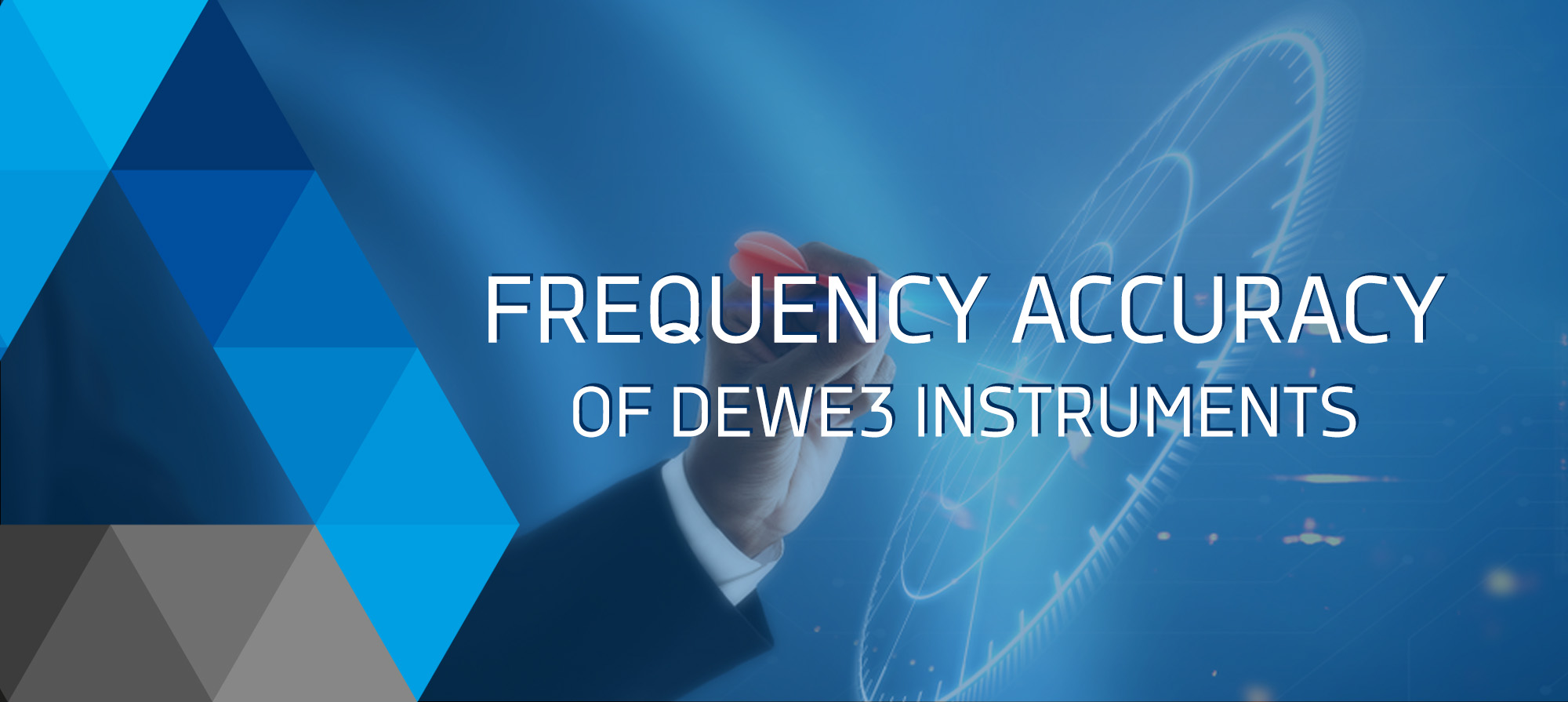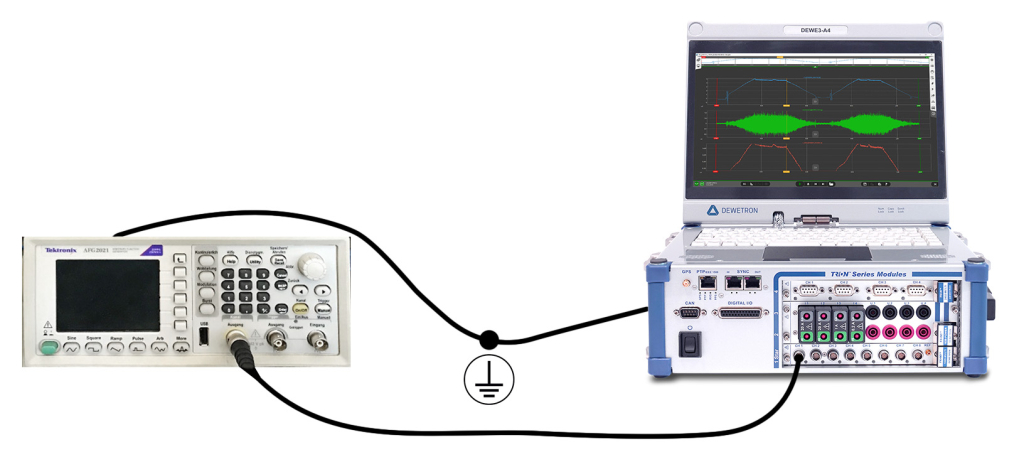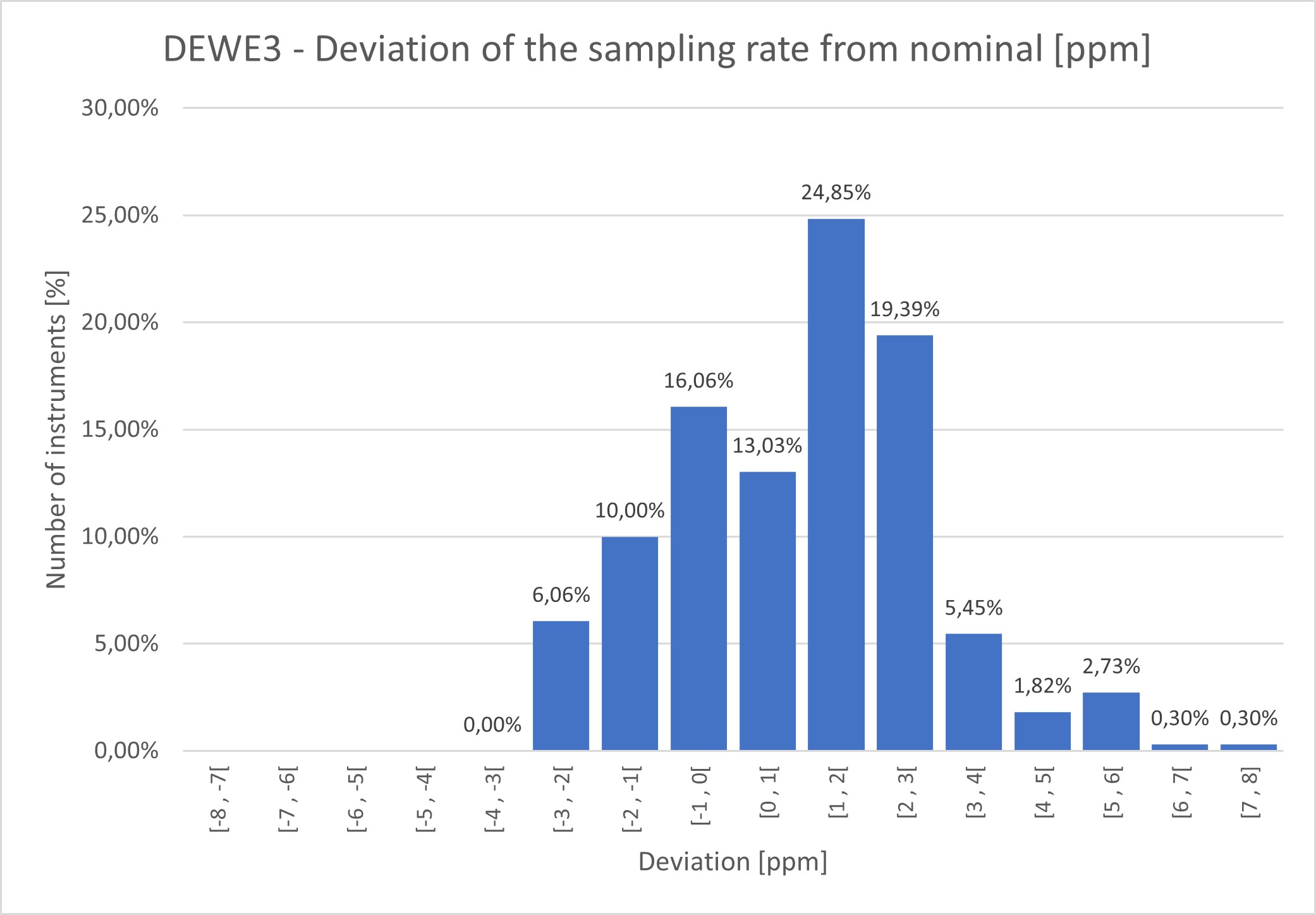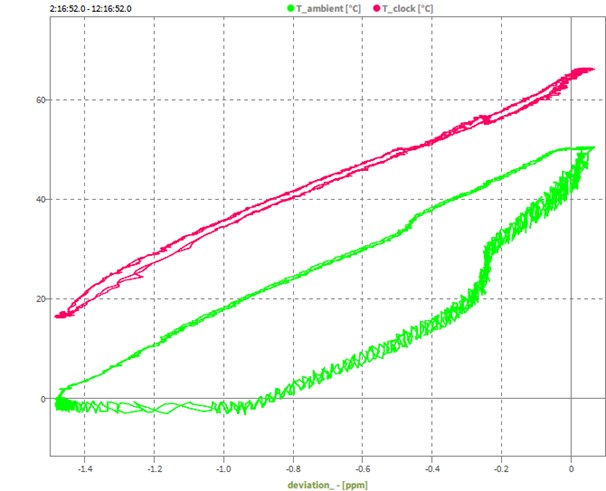Frequency accuracy || Whitepaper

Introduction
In analog data acquisition, accuracy always means analog accuracy of an input compared to an accurate reference signal – done in the calibration process. This is the most needed value in calibration.
Some sensors send their signal over a frequency or over a pulse width. Accurately measuring frequency, pulse width, duty cycle or period of a signal implies an accurate time base of the measuring device. This time base is defined by the system clock. How precise and meaningful the measured and recorded data is, depends heavily on the clock accuracy of the instrument.
For example, some torque transducers output the measured torque as a frequency (e.g. centered around 60 kHz). An inaccurate system clock of the measurement device then leads to an inaccurately measured torque. That is why the accuracy of the clock is so important. And in this whitepaper, we will find out how accurate the system clock of DEWE3 systems really is, even depending on temperature and aging.
Measurement setup
To measure the accuracy of the frequency measurement and with it the system clock accuracy a highly accurate frequency source is needed. This source is then connected to a DEWE3 counter input to measure the frequency of the source.

Fig. 1: Measurement setup
The Arbitrary Function Generator (AFG) provides a TTL square signal of 1 Hz to a counter input of the DEWE3. The instrument measures the signal frequency, and a deviation is calculated:
 Where fMEASURED is the measured and displayed frequency in OXYGEN, the measurement software running on the DEWE3 system and fINPUT is the set frequency on the function generator, which is exactly 1 Hz. The function generator itself not only has an amplitude accuracy but also a clock accuracy.
Where fMEASURED is the measured and displayed frequency in OXYGEN, the measurement software running on the DEWE3 system and fINPUT is the set frequency on the function generator, which is exactly 1 Hz. The function generator itself not only has an amplitude accuracy but also a clock accuracy.
Internal frequency response stability – all except ARB: ±1 ppm 0 °C to 50 °C.
This means that the function generator which is the frequency source of the 1 Hz signal does not exactly output the desired frequency. But the AFG has minimal drift in this deviation. Since the function generator is providing a high short-term stability, the deviation of the source can be compared to a PPS (pulse per second signal) of the GPS receiver (devAFG). So, the deviation of AFG can be compensated and is taken into account in the final accuracy calculation.
In total the deviation of clock frequency of a certain DEWE3 instrument amounts to:
![]()
Subtracting the deviation from the function generator is within a combined deviation of 20 ppm an allowed simplification. Comparing to the actual compensated frequency, fACT, which is here within a range of ±1 ppm of 1 Hz:

Whereas fACT , the frequency actually generated by the source, measured with the PPS signal is:
![]()
Since:

When neither the deviation of the DEWE3 nor the AFG exceed 10 ppm then the relative discrepancy between both calculations (devDEW and devACT [ppm]) of the deviation is within 0.002 %, and this is accepted, since just subtracting the devAFG is a lot easier and faster.
Accuracy of frequency measurement
Fundamentally system clock and time base are determined by a crystal oscillator, commonly abbreviated as XTAL. This piezoelectric crystal is oscillating at a very stable high frequency. This is utilized in many electrical circuits where very precise clock cycles are required.
DEWE3 instruments are equipped with a crystal oscillator of ±1.5 ppm initial accuracy (at 25°C). A temperature drift is given as ±7 ppm, and the frequency drift in the first year as ±3 ppm.
The frequency accuracy distribution of all DEWE3 instruments shipped to date is as follows:

Fig. 2: Bar plot of clock accuracy
Over a long time, the clock accuracy of shipped DEWE3 system is measured and monitored, given a bar plot and distribution of initial clock accuracy in ppm. One step on the deviation-axis is 0.5 ppm.
- Average: 1.01 ppm
- Median: 1.40 ppm
- Maximum: 7.10 ppm
- Minimum: -2.65 ppm
Temperature coefficient
As previously mentioned, the crystal oscillator creating the system clock is a piezoelectric component. This component is not immune to temperature changes. Its frequency changes very slightly with changing temperatures.
Therefore, a temperature test was done in the climate chamber. By setting the lower temperature to 0 °C and the higher to 50 °C the cycle (1 hr heating up / 1 hr at 50 °C /1 hr cooling down /1 hr at 0 °C) was repeated three times.

Fig. 3: Temperature dependence of clock accuracy
The diagram above shows an XY plot of temperature in respect to clock deviation. Two temperature sensors were used, one mounted on the clock device surface and the other in the climate chamber. Note that the clock temperature is always a little bit higher than the ambient temperature of the climate chamber, since the DEWE3 measuring system inherently produces a little bit of heat.
For lower temperatures the clock deviation gradually becomes more negative. This means that the frequency measured is lower than the actual value, which can be traced back to the crystal oscillating too slow in lower temperatures.
From this measurement a temperature gradient of 0.03 ppm/°C can be obtained. Note the hysteresis shape of the graphs coming from a certain heating/cooling rate.
Conclusion
The DEWE3 System clock is very accurate. This is important for sensors, which modulate their measured physical quantity like torque, speed, temperature, and others. But this clock accuracy is not immune to external influences, like temperature and aging.
All of the measured DEWE3 System are well within the typical ±10 ppm limits specified in the manual. The future development due to aging will be tracked in calibration.
DEWETRON is a specialist in the field of measurement technology. The goal is to produce measuring equipment that meets the highest possible quality standards, is modular and versatile, as well as easy to use.
If you want to learn more about DEWETRON, you can visit our DEWETRON website. There you will find further whitepapers as well as blogposts and video tutorials. We are also active on social media. Take a look at our Twitter, LinkedIn or YouTube pages.
DEWETRON – Your expert in measurement technology
DEWETRON is a specialist in the field of measurement technology. The goal is to produce measuring equipment that meets the highest possible quality standards, is modular and versatile, as well as easy to use.
If you want to learn more about DEWETRON, you can visit our DEWETRON website. There you will find further whitepapers as well as blogposts and video tutorials. We are also active on social media. Take a look at our Twitter, LinkedIn or YouTube pages.





